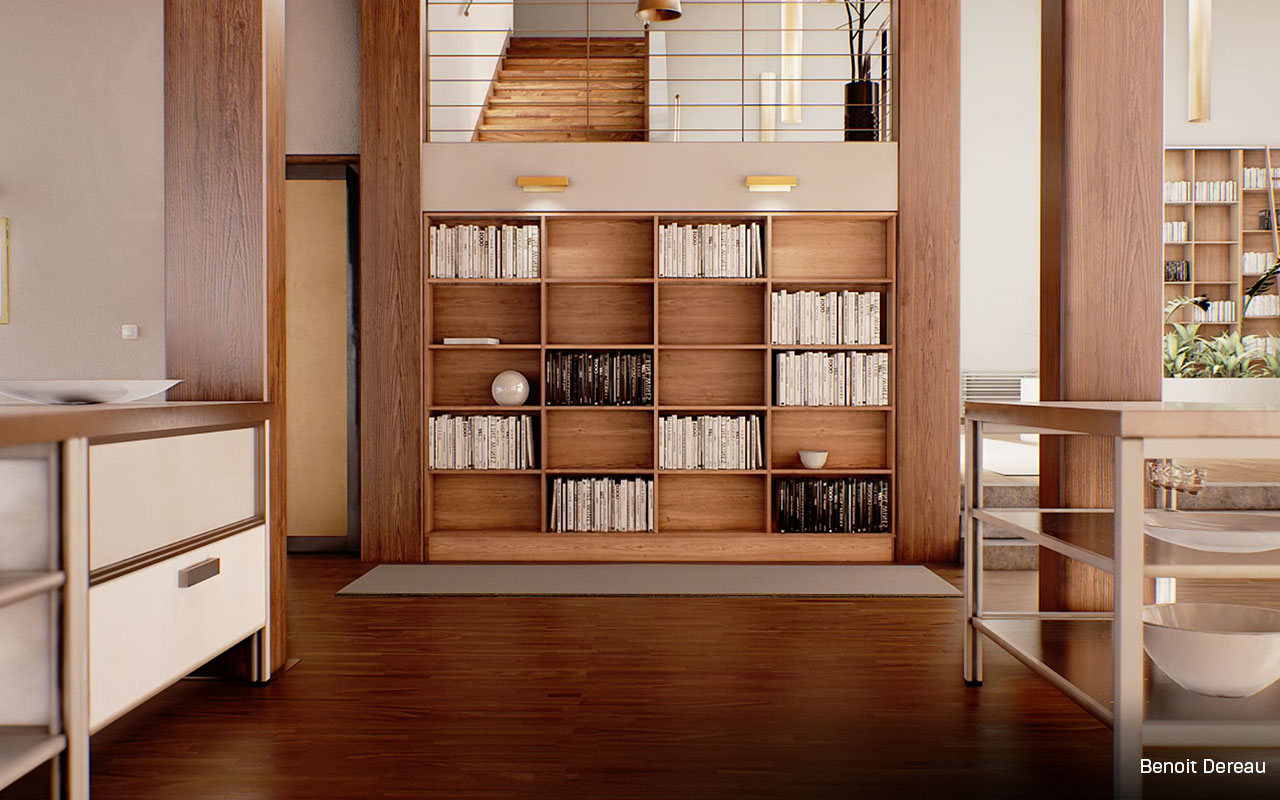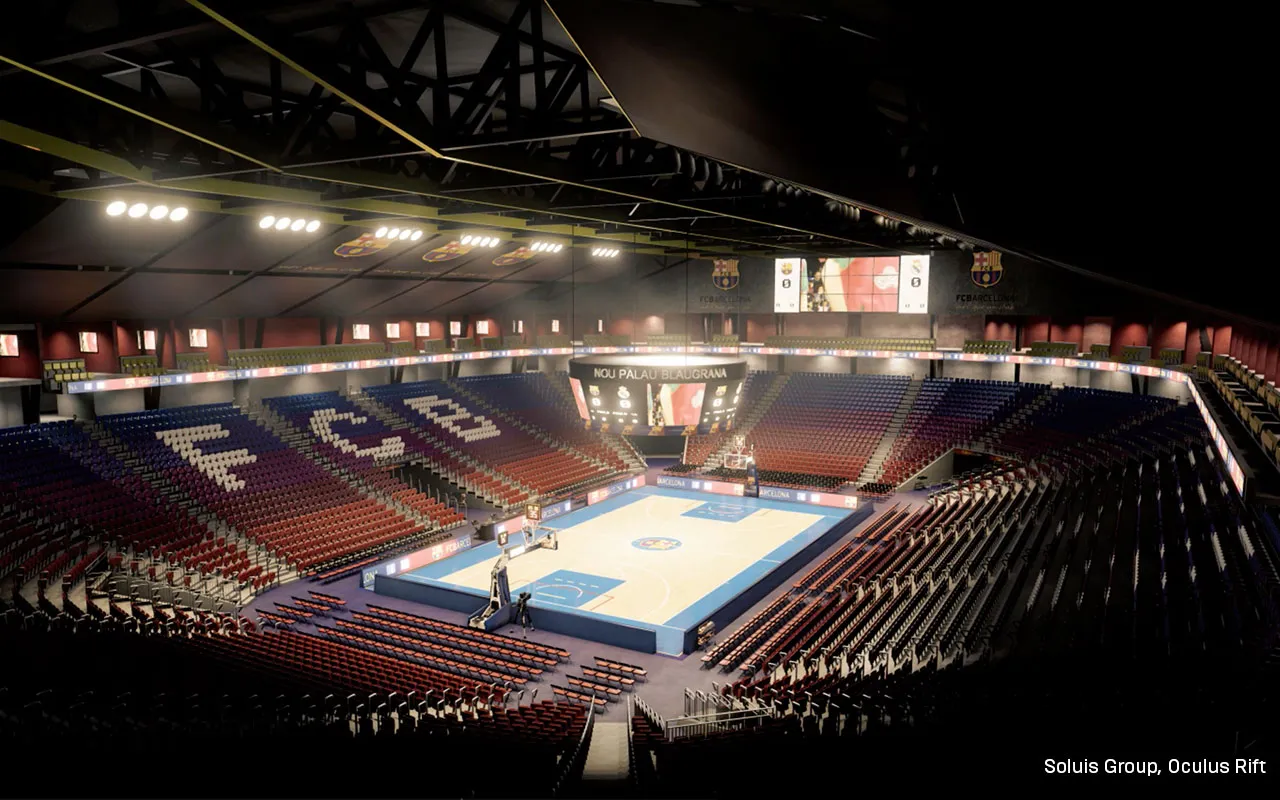Opening the Door to Real-time Design with Unreal Studio
Using real-time, immersive visualization methods to better drive the design process is creating a world of new opportunity in the design space. What if you could explore early-stage design concepts within a virtual environment where changes are immediate and feedback instant? How would you improve the design if you could explore more “what if” scenarios in a shorter period of time? With the arrival of Unreal Studio, real-time design can now be explored by anyone.
Real-time design is emerging as a new benchmark for giving artists and designers flexibility in their visualization and digital content creation workflows across many industries. Companies like HOK, Herman Miller and BMW are already embracing a future built around real-time solutions and how they can transform the design process. Static imagery will always have its place, but you don’t have to look far to see the powerful results that real-time design brings to the creative process.
The ability to design an interactive experience that’s moldable to the needs of stakeholders and clients — and all in real-time — is changing the way teams operate both on the creative and business fronts. Greater iteration, adaptability, and speed during the design and review process leads to faster decision making, and the end results are improved substantially from the enhanced engagement and room for customization this delivers.
Traditional design technologies are slower and less flexible in comparison, making the shift to real-time design a smart decision for a growing number of industries aiming to capture the magic of immersive design experience. Outside of game development, Unreal Engine is also the real-time engine of choice for many in the fields of architectural visualization, engineering, and product design seeking to gain an edge over the competition. A recent survey of visualization professionals backs this up by showing Unreal Engine as the leading solution for real-time use. Here are just a few of thebenefits designers in this space are gaining from adopting real-time technologies:
Benefits of real-time engines for design
- Make changes in milliseconds instead of waiting for hours or days (offline animations)
- Rapid iteration and “what if” exploration drives faster design decisions
- Assets are created once, but can be used for everything from static images to fully immersive experiences
- Maintain high-fidelity results without sacrificing speed
- You can experience design (AR, VR) rather than a static image
Real-time technology is gaining steady ground among artists and designers, yet getting complex CAD and design data into real-time engines for architectural and product design visualizations has been an obstacle to this new approach to interactive design. Until now, the struggle to bring heavy CAD assets into engines for real-time use has been a slow, progress-choking affair, but all of that is about to change quite dramatically.
Building better pipelines to overcome these barriers and help creatives tap into the potential of real-time design is critical for continued progress. That’s why the Unreal Enterprise Team has worked hard to put together the knowledge, resources, and tools needed to address these challenges and make real-time production a reality for more design teams.
 Introducing Unreal Studio
Introducing Unreal Studio
Down time is dead time in the design world, and nobody wants to be blocked by the technical limitations of their tools to support a fast-paced creative process. Designing at the speed of thought is the ultimate goal, and Unreal Engine introduces that possibility by removing obstacles that impede the process — further freeing up artists to focus on being creative and honing their work rather than being bogged down in the grind of data management.
That’s where Unreal Studio makes all the difference in the world.
Engineered to make the lives of today’s digital designers easier, Unreal Studio is a comprehensive suite that includes a workflow toolkit, assets, support, and learning solutions that simplify importing architecture and design data into Unreal Engine for experiencing design and visual communication. It includes Datasmith, which streamlines the process of bringing CAD and 3ds Max data into Unreal Engine delivers frictionless import and optimization of your design data in a non-destructive workflow.
Simply put: getting your complex design assets into Unreal Engine for architecture, manufacturing, and product design is now faster, easier, and more efficient than ever!
Unreal Studio delivers:
- Datasmith: a workflow toolkit for non-destructive import of data into Unreal Engine
- Industry-focused learning solutions
- Exclusive assets, including 100 Substances from Allegorithmic
- Dedicated technical support
Anyone who has struggled under the weight of working with huge assets assets under tight deadlines understands the value of shaving hours and even days off of production. Unreal Studio breaks down the barriers to getting your work up and running in real-time faster. It’s been a real game-changer for Unreal Engine users in the architecture and product design space, who have seen a huge time and cost savings from incorporating the toolkit into their production pipeline. According to a survey sent to 15,000 beta users, Unreal Studio improved their productivity by over 100%. One of the beta users told us:
“Datasmith has given HNTB the ability to quickly iterate through design changes and visualize them from every angle in real time at the same quality level expected from our traditional renders. This allows us to make sure we can deliver exactly what the client has envisioned and allows us to save days of rendering time.” – Austin Reed, 3D Visualization Team Lead, HNTB Corporation
 Creative real-estate design agency Neoscape found it helped them overcome the obstacles to real-time design by allowing them to accomplish the same workload that took four weeks to test in just a single day. The design team at Herman Miller Inc. found Datasmith’s ease of use equally valuable, as it was able to effortlessly tackle importing large, complicated scenes in 3ds Max into Unreal without any pre-optimization or prep work on the files. Across the board, users are seeing the difference of using the toolset in their daily real-time workflows.
Creative real-estate design agency Neoscape found it helped them overcome the obstacles to real-time design by allowing them to accomplish the same workload that took four weeks to test in just a single day. The design team at Herman Miller Inc. found Datasmith’s ease of use equally valuable, as it was able to effortlessly tackle importing large, complicated scenes in 3ds Max into Unreal without any pre-optimization or prep work on the files. Across the board, users are seeing the difference of using the toolset in their daily real-time workflows.
Beyond time-saving tools, Unreal Studio also is packed with resources to help you get the most out of utilizing real-time design in your pipeline. From architectural design-specific training materials and invaluable assets for jump-starting production to in-depth technical support access, it provides an easy on-ramp to help designers find an easier path to enhanced productivity and more creative freedom through real-time design.
Curious to see how Unreal Studio can bring your real-time design workflows to life with ease? Try the free public beta today!






















